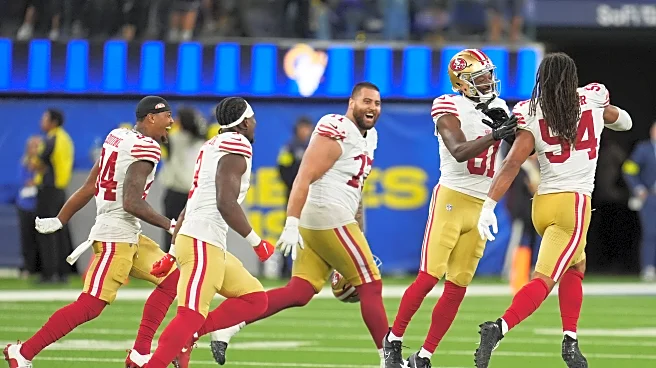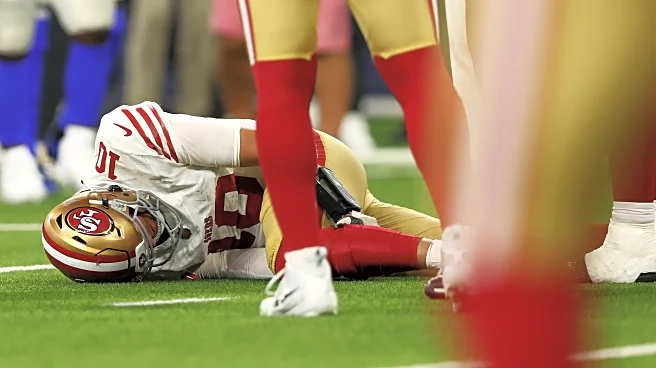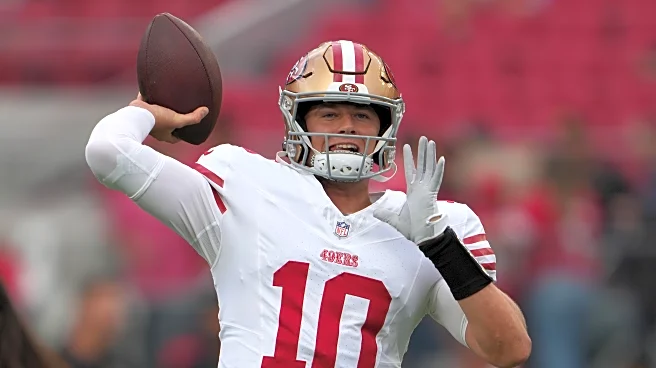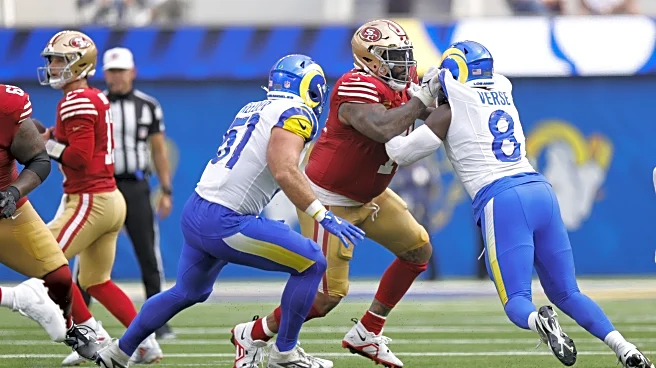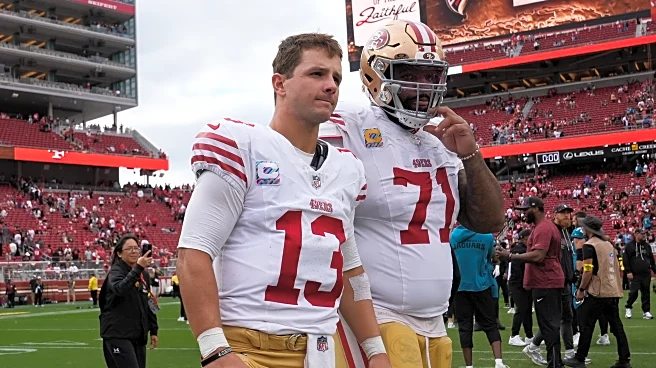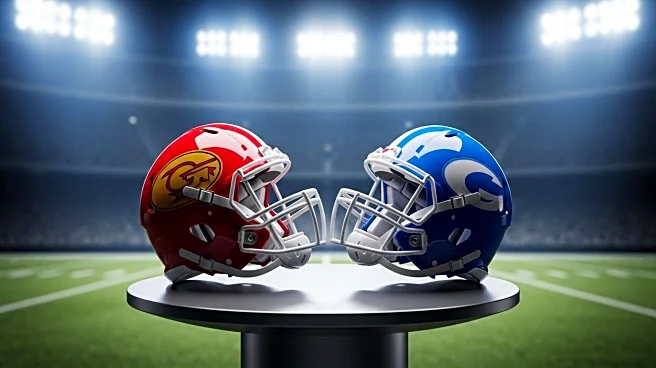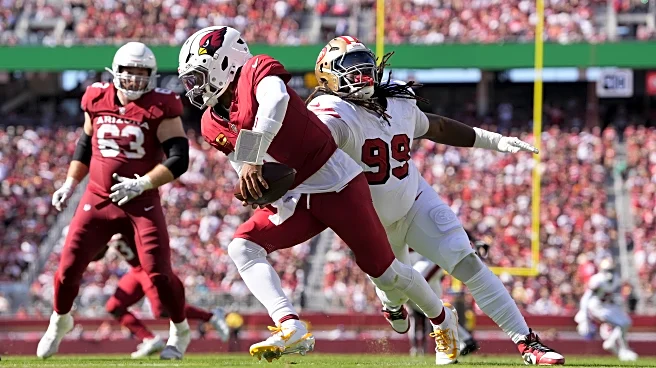What's Happening?
Mac Jones and Kendrick Bourne, former New England Patriots players, showcased impressive performances in the San Francisco 49ers' overtime win against the Los Angeles Rams. Mac Jones, stepping in for injured quarterback Brock Purdy, completed 33 of 49 passes for 342 yards and two touchdowns, achieving a passer rating of 100.9. Kendrick Bourne, a wide receiver, caught 10 passes for 142 yards, setting career highs. The game marked Jones' third consecutive win as a starter for the 49ers, highlighting his effective integration into Kyle Shanahan's system. Bourne's contributions were praised by teammates, emphasizing his positive impact on team dynamics.
Why It's Important?
The performances of Mac Jones and Kendrick Bourne are significant as they demonstrate the successful adaptation of former Patriots players to the 49ers' system. Jones' ability to lead the team to victory in the absence of Brock Purdy underscores his potential as a reliable quarterback option. Bourne's standout performance further solidifies his role as a key offensive player. These developments could influence the 49ers' strategic decisions moving forward, particularly in quarterback selection and offensive playmaking. The success of these players also reflects the broader trend of player transitions between teams and their impact on team performance.
What's Next?
With Brock Purdy recovering from injury, Mac Jones is likely to continue as the starting quarterback for the 49ers, providing him with further opportunities to prove his capabilities. The team may focus on strengthening their offensive strategies around Jones and Bourne, leveraging their chemistry and performance. The 49ers' upcoming games will test their adaptability and resilience, particularly against strong defensive teams. The coaching staff may also consider long-term plans for integrating Jones into the team's core lineup, depending on his continued performance.
Beyond the Headlines
The success of Mac Jones and Kendrick Bourne with the 49ers highlights the potential for players to thrive in new environments, suggesting that team dynamics and coaching strategies play crucial roles in player development. This situation may prompt other teams to reevaluate their player acquisition and integration strategies, focusing on maximizing individual strengths within team frameworks. Additionally, the narrative of player redemption and second chances in professional sports is reinforced, offering insights into the psychological and motivational factors influencing athlete performance.

